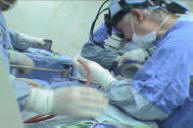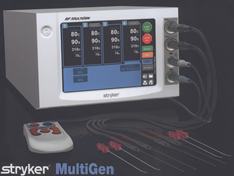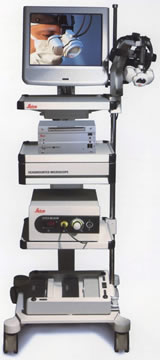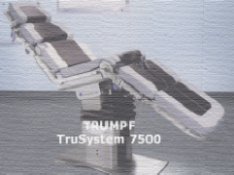|

Most of the site will reflect the ongoing surgical activity of Prof. Munir Elias MD., PhD. with brief slides and weekly activity. For reference to the academic and theoretical part, you are welcome to visit
neurosurgery.tv
Functional Neurosurgery
functionalneuro.surgery
Functionalneurosurgery.net
IOM Sites
iomonitoring.org
operativemonitoring.com
Neurosurgical Sites
neurosurgery.art
neurosurgery.me
neurosurgery.mx
skullbase.surgery
Neurosurgical Encyclopedia
neurosurgicalencyclopedia.org
Neurooncological Sites
acousticschwannoma.com
craniopharyngiomas.com
ependymomas.com
gliomas.info
gliomas.uk
meningiomas.org
neurooncology.me
pinealomas.com
pituitaryadenomas.com
Neuroanatomical Sites
humanneuroanatomy.com
microneuroanatomy.com
Neuroanesthesia Sites
neuro-anesthessia.org
Neurobiological Sites
humanneurobiology.com
Neurohistopathological
neurorhistopathology.com
Neuro ICU Site
neuroicu.info
Neuroophthalmological
neuroophthalmology.org
Neurophysiological Sites
humanneurophysiology.com
Neuroradiological Sites
neuroradiology.today
NeuroSience Sites
neuro.science
Neurovascular Sites
vascularneurosurgery.com
Personal Sites
cns.clinic
Spine Surgery Sites
spine.surgery
spondylolisthesis.info
paraplegia.today
Stem Cell Therapy Site
neurostemcell.com

Inomed Stockert Neuro N50. A versatile
RF lesion generator and stimulator for
countless applications and many uses

Multigen RF lesion generator .
|
 |
|
 |
| |
|
Dementia with Lewy bodies (DLB) is recognized as a
distinct neurodegenerative disease with established
clinical criteria. Lewy bodies, which are the
characteristic
features of Parkinsonís disease in the substantia
nigra, are abundant in the neocortex. They are
commonly found in people with other types of dementia
and DLB by itself is less common than the mixed
(AD and Lewy body) type. However, pathologic studies
have revealed a consistent pattern of vulnerability
to Lewy body formation across subcortical, paralimbic,
and neocortical structures that was not related to the
amount of AD changes, indicating that dementia with
Lewy bodies is a distinct pathology rather than a
variant
of AD. Clinically, patients with DLB exhibit
symptoms
close to those of AD patients, but with relevant
motor features of Parkinsonism. Generally, DLB
is diagnosed when cognitive symptoms develop within a
year or two of movement disorder/Parkinsonian symptoms.
Based on in vivo cerebral MRI studies, patients
with DLB have various morphologic changes, including
global brain volume loss, regional atrophy in the
frontal and temporal lobes, hippocampus, and amygdala. Differences in the severity of atrophy between
AD and DLB have been investigated, usually reporting
similar losses in the total brain volume, but less
severe
atrophy in the hippocampus and temporoparietal cortex
in DLB patients than in those with AD.
1H-MRS
There are few MRS studies on patients with DLB, and
the technique is not generally used for diagnostic
purposes
in this disease. It is interesting to note, however,
that in comparison with AD patients, those with
DLB show less (or no) decrease in NAA/Cr levels in
brain regions such as the posterior cingulate gyri. This may reflect the relative sparing
of neurons in that region seen at autopsy, and
again could be useful at early disease stages to
distinguish
patients with DLB from other dementia syndromes. Increases in the Cho/Cr ratio have been
reported in DLB, which have been suggested to be due
to increased membrane turnover in this disease. |
|
|
 Skyra MRI with all clinical applications in the run since 28-Novemeber-2013.

Leica HM500
The World's first and the only Headmounted Microscope.
Freedom combined with Outstanding Vision, but very bad video recording and
documentation.

After long years TRUMPF TruSystem 7500 is running with in the neurosuite at
Shmaisani hospital starting from 23-March-2014 |







